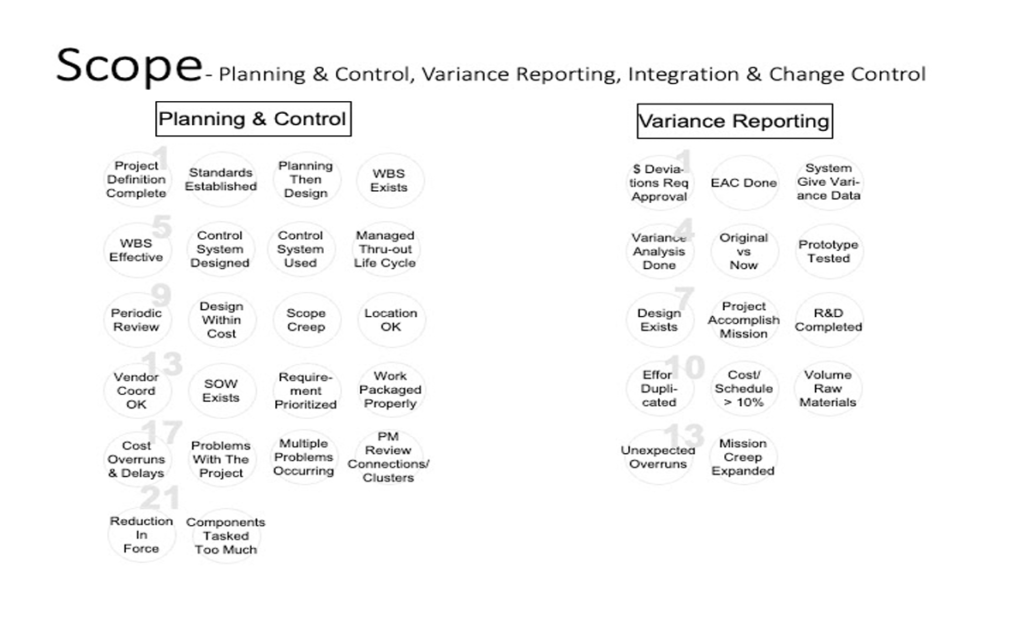
strong>PLANNING AND CONTROL:
1 – Project definition was complete?
2 – Project standards are established?
3 – Planning was completed and then design was begun?
4 – A work breakdown structure (WBS) exists?
5 – The WBS is effective?
6 – A control system is designed?
7 – The control system is being used?
8 – The project is managed throughout its entire life cycle?
9 – Project is periodically reviewed?
10 – Project is designed within its budgeted cost?
11 – Was scope creep allowed to occur without management approval?
12 – Location is ok?
13 – Was/ is vendor coordination effective?
14 – Does a statement of work (SOW) exist?
15 – Are/ were requirements prioritized?
16 – Is the project’s work packaged properly (by phase, time and money properly budgeted for)? (Yes = good)
17 – Knows the aspects of the project that are most prone to cost overruns and delays? (No = bad)
18 – Does project manager know the extent and the limits of the problems with the project? (Yes = good)
19 – Are multiple problems occurring at the same time? (Yes = bad)
20 – When problems do occur, does PM review potential interrelated connections/ clusters? (Yes = good)
21 – In the event of a drawdown/ reduction in force (RIF), does the PM have knowledge of:
*When the RIF would begin?
*How long it will last?
*The staff to keep on/fire/ reduce the use of (such as contractors)?
*Any additional staff to hire?
*The new budget/ burn rate – how to slow it down, if required/ production targets?
*Review new situation and the use of overtime?
*Any process changes?
22 – Is project/ its components being tasked to do too much at the same time? (Yes = bad)
——————————————
VARIANCE REPORTING:
1 – Do budget ($) deviations require approval?
2 – Is an estimate at completion (EAC) done to predict future project difficulties.
3 – Does the control system give variance data?
4 – Are variance analyses done?
5 – What was the project’s original scope? What is the project’s scope now? (Orig vs. now?).
6 – Was a prototype tested?
7 – A design exists?
8 – Can this project accomplish its mission?
9 – Is the research and development (R&D) complete?
10 – Is there any duplication of effort with other projects or within the same project?
11 – Are many subtasks over 10% of their estimate?
12 – Do/ does the volume of incoming raw materials match the volume of finished (outgoing) components being shipped out?
13 – Do large unexpected overruns suddenly occur at once? (Yes = bad – re-evaluate controls)
14 – Has ‘mission creep’ significantly expanded the project’s mandate beyond its original tasking? (Yes = bad)
